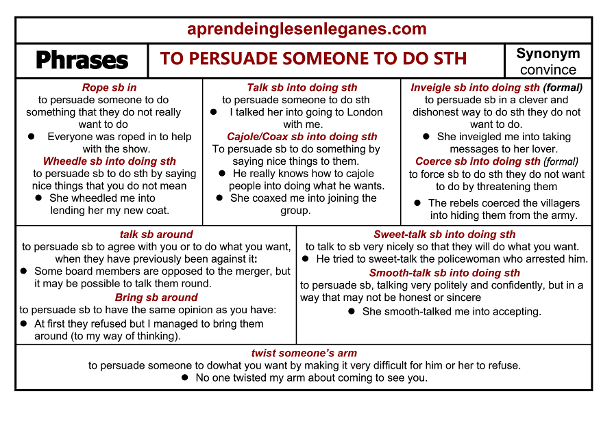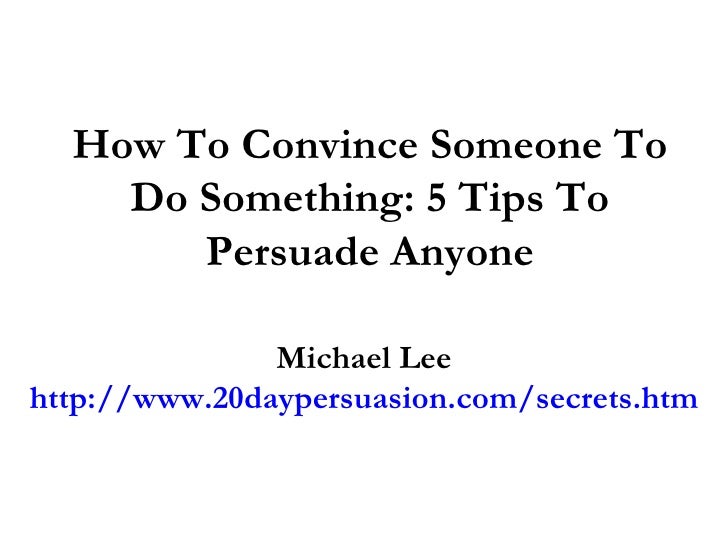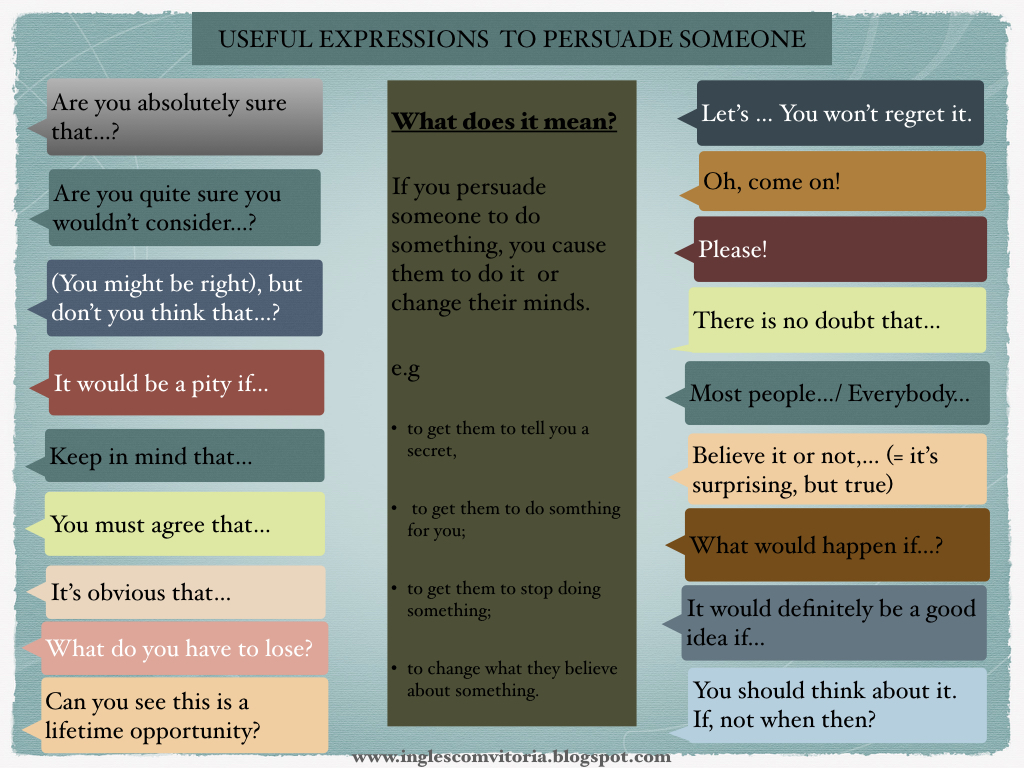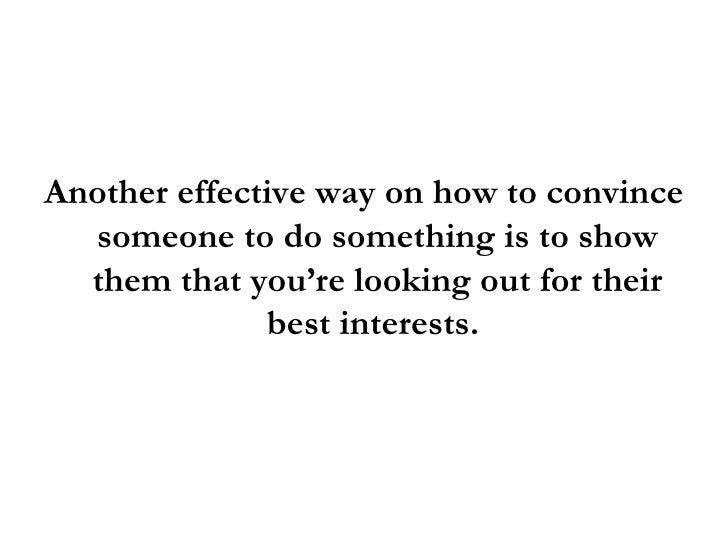How To Convince Someone To Do Something For You

Time is ticking! Mastering the art of persuasion is crucial for navigating both personal and professional landscapes effectively.
This guide delivers actionable strategies to enhance your persuasive abilities, ensuring you can influence decisions and mobilize actions swiftly and ethically.
Understanding Your Audience
First, identify your target. Who are you trying to convince?
Understanding their motivations, values, and potential objections is paramount. Research from Robert Cialdini's work on influence highlights the power of knowing your audience.
What are their needs? What keeps them up at night?
Crafting Your Message
Frame your request as a benefit, not a burden. Focus on what they stand to gain by helping you.
Data suggests that highlighting the positive outcomes increases receptiveness by over 30%. Make it a win-win.
Be clear, concise, and direct. Vagueness breeds uncertainty.
Building Rapport and Trust
People are more likely to help someone they like and trust. Establish a connection first.
Find common ground. Active listening is key.
According to a study by the Harvard Business Review, individuals are 55% more likely to comply with requests from those they perceive as similar to themselves.
Leveraging Reciprocity
People feel obligated to return favors. Have you helped them recently?
Offering something in return, even a small gesture, can significantly increase your chances of success. Pre-suasion is powerful, even if it's the perception of reciprocity.
Employing Social Proof
Demonstrate that others have already done what you're asking. It reduces perceived risk.
Cite testimonials or examples of others who have benefited from similar actions. "Everyone else is doing it" can be surprisingly effective.
Addressing Objections
Anticipate potential resistance and prepare counterarguments. Don't be caught off guard.
Acknowledge their concerns and offer solutions. Validate their perspective.
According to negotiation experts, directly addressing objections can increase the likelihood of agreement by up to 40%.
The Power of Scarcity and Urgency
Create a sense of urgency to prompt immediate action. Highlight limited availability or deadlines.
Explain the consequences of inaction. Don't be manipulative, but be honest about the stakes.
The Art of the Ask
Be confident and direct in your request. Don't be afraid to ask.
Use a clear and concise call to action. Make it easy for them to say "yes."
Harvard Professor Amy Cuddy's research shows that projecting confidence, even when you don't feel it, can significantly influence the outcome.
Following Up Effectively
If you don't receive an immediate response, follow up politely. Don't be pushy, but persistent.
Reiterate the benefits and re-address any lingering concerns. Timing is everything.
Remember,
"The squeaky wheel gets the grease,"but be respectful and understanding.
Ethical Considerations
Always be ethical in your persuasive tactics. Avoid manipulation and deception.
Long-term relationships are built on trust and integrity. Maintain your credibility.
Ultimately, effective persuasion is about creating mutually beneficial outcomes based on honesty and respect.
Next Steps
Practice these techniques in low-stakes situations to refine your skills. Seek feedback to improve your approach.
Continuously adapt your strategies based on your audience and the specific context. Stay informed about the latest research on influence and persuasion.
Mastering these techniques requires constant refinement, but its rewards are significant. Begin your journey to influence today!

















